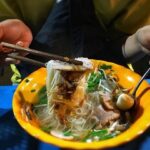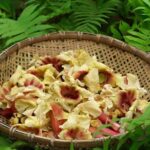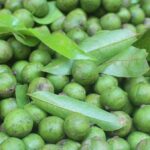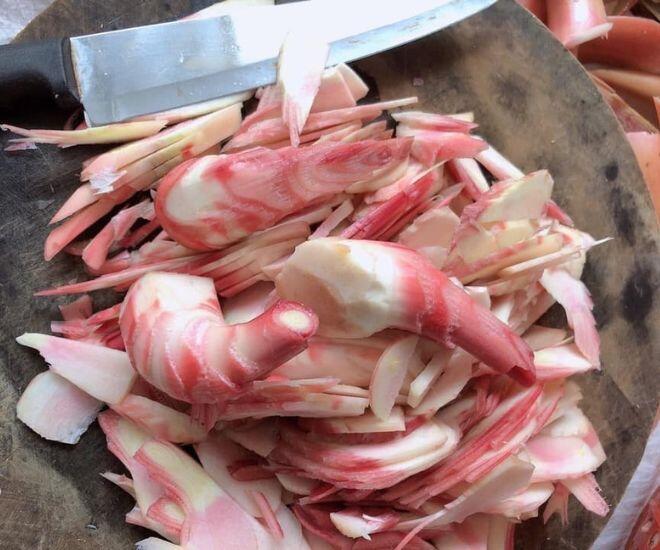
Unlocking the Secrets of Bud Ginger: A Culinary and Medicinal Treasure of Northwest Vietnam
In recent years, bud ginger has emerged as a unique traditional spice and a versatile ingredient in the rustic cuisine of Northwest Vietnam. With its high essential oil content and valuable bioactive compounds, bud ginger is making its mark in both culinary and health realms.
Bud Ginger in Cuisine
While mature ginger fruit is commonly used to flavor stews and pho, bud ginger showcases its versatility in a myriad of rustic dishes of the Tay, Dao, and Hmong ethnic groups in the mountainous provinces of Lao Cai, Lai Chau, and Son La.

With its warm aroma and mild spiciness, bud ginger neutralizes the fishy odor of meat and adds depth of flavor to dishes. In the traditional feasts of highland dwellers, bud ginger is thinly sliced, marinated with native pork or black chicken, and grilled over charcoal, resulting in an unforgettable culinary experience.
Stews like buffalo meat with banana blossoms, chicken with mushrooms, or stream fish cooked with ginger and galangal are elevated by the inclusion of bud ginger slices, not only enhancing the aroma but also imparting a warming sensation, especially welcome during chilly, rainy days in the mountains.
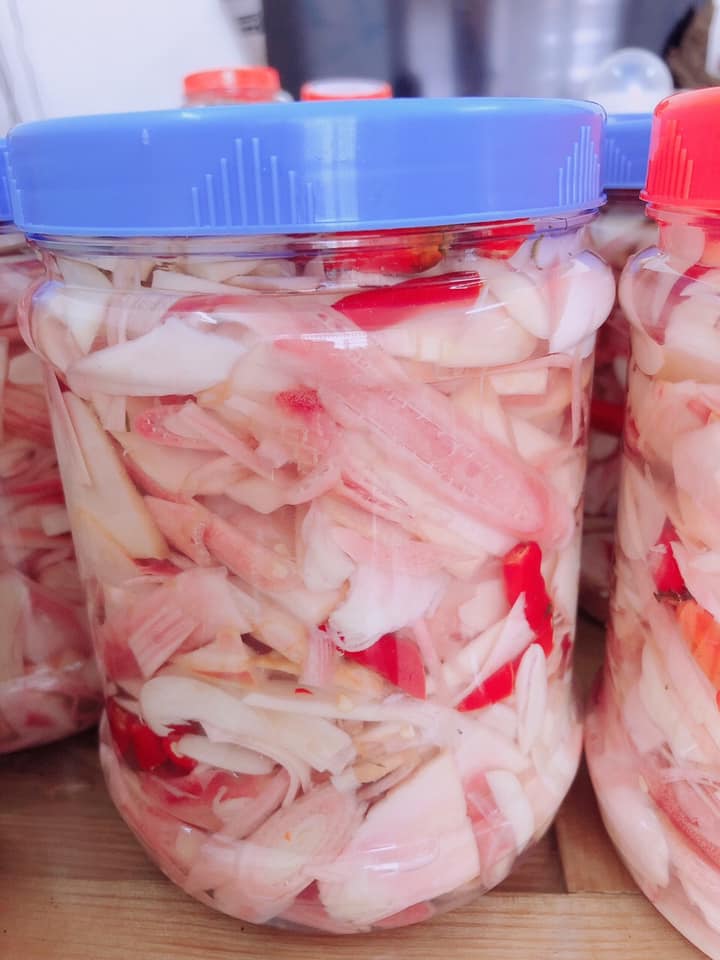
Locals also stir-fry bud ginger with eggs and smoked meat or combine it with bamboo shoots and galangal to create dishes that embody the essence of the mountainous region. Of particular note is the unique dish of pickled bud ginger, where the buds are soaked in vinegar, garlic, and chili, serving as a condiment for boiled meat or a dipping sauce for grilled dishes.
Botanical Characteristics and Specific Growing Conditions
Ginger belongs to the Zingiberaceae family and is native to tropical Asia. In Vietnam, it is predominantly found in the northern mountainous provinces of Lao Cai, Ha Giang, and Yen Bai, favoring the cool climate, high humidity, and nutrient-rich forest soil. Notably, ginger thrives at altitudes ranging from 1,000 to 1,500 meters above sea level, where temperatures hover between 20–25°C and annual rainfall reaches 1,500–2,000 mm.
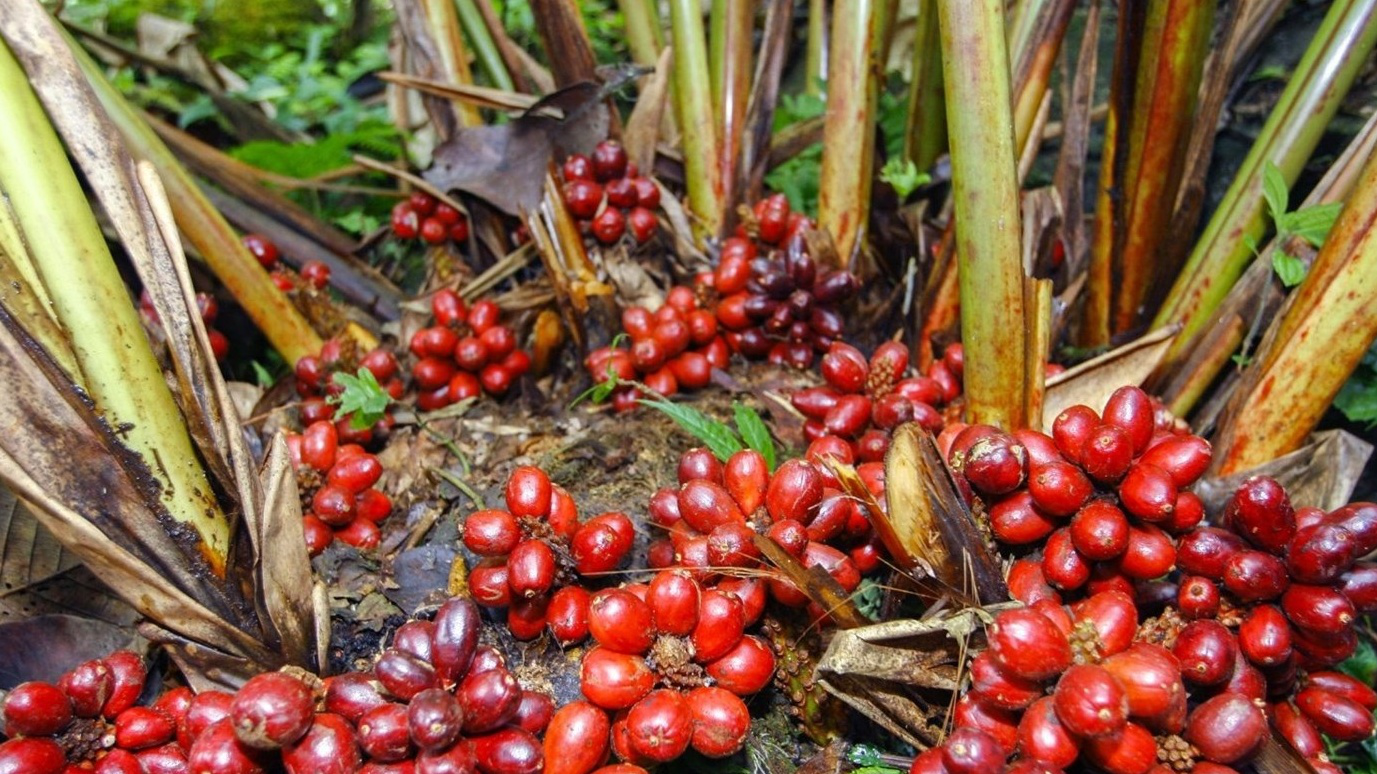
Bud ginger typically emerges at the onset of the rainy season, from April to May, when natural conditions are optimal for its growth. This delicate shoot has an elongated shape, measuring 1–2 cm in diameter, and sports a creamy white or pale pink hue depending on its developmental stage. Beneath its thin outer layer lies a treasure trove of mucilage and essential oils, imbued with bioactive compounds.
Chemical Composition and Medicinal Value
Laboratory analyses conducted in Vietnam reveal that bud ginger contains 2–3% essential oil, surpassing the content in mature ginger fruit by 20–30%. Cineole (40–50%) and α-terpineol (15–20%) are the predominant constituents of this oil, accompanied by limonene and other organic compounds.
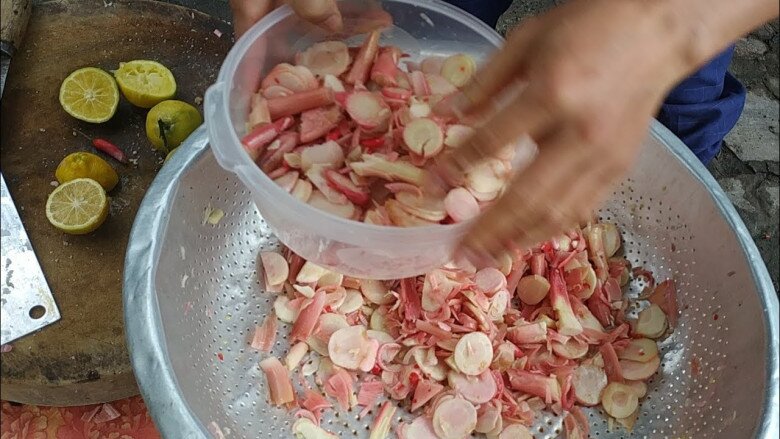
Both cineole and α-terpineol have been scientifically proven to exhibit antibacterial, anti-inflammatory, antitussive, and digestive-enhancing properties. Additionally, bud ginger is a good source of vitamin C (12–15 mg/100g), potassium (250–300 mg/100g), soluble fiber, and flavonoids such as quercetin and kaempferol, which bolster immune function and exert antioxidant effects on cells.
Recognizing these attributes, ethnic folk healers have long utilized bud ginger to warm the spleen and stomach, aid digestion, alleviate flatulence, and alleviate cold stomach pain—conditions prevalent in the cold, damp climate of the highlands.
Development Potential and Commercialization
Despite its growing recognition, bud ginger remains largely underutilized, with its exploitation and consumption limited to small-scale family needs and specialty restaurants. This situation arises from the ginger plant’s stringent growing requirements, necessitating its cultivation in primary forests or special ecological zones, meticulous care, and a brief harvesting window.
However, with the involvement of medicinal herb cooperatives and the burgeoning agricultural startup scene in Ha Giang and Lao Cai, bud ginger is making inroads into deeper processing. Examples include dried products, spice powders, and herbal lozenges, extending its shelf life and broadening its market reach.

Bud ginger, a delicate shoot sprouting from the ancient forest floor, encapsulates a story of life, flavor, and wellness. Beyond its role as a culinary enhancer, bud ginger is nature’s gift to the people of Northwest Vietnam. From rustic kitchens to modern dining tables, bud ginger has left its mark on countless memorable dishes: grilled native pork infused with the aroma of bud ginger over charcoal, stream fish stewed with bud ginger and bamboo shoots, chicken braised with bud ginger evoking the essence of the forest, or simply pickled bud ginger slices accompanying boiled meat, awakening the senses. These dishes not only tantalize the taste buds but also impart a warming sensation in the belly, perfectly suited to the cool climate of the highlands.
The Ultimate Quest for Saigon’s Iconic ‘Hu Tieu Go’: Unveiling the Secret to 250 Bowls Sold Nightly
For an authentic and delectable experience of Hu Tieu Go, seek out the renowned street-side stalls and humble vendors. These unsung heroes of Vietnamese cuisine offer a taste sensation that is truly exceptional. With every bowl, they serve up a hearty helping of tradition and a generous dash of passion, ensuring a memorable dining encounter.
The Forgotten Flower: A Tasty Treat for the Urban Forager
The Northwest is renowned for its majestic landscapes and unique culinary delights. Among these delights is the Ké flower, a forest flower with a distinct bitter taste that has captivated the palates of discerning food enthusiasts. This exotic ingredient may not be an easy flavor to acquire, but those who acquire a taste for it become enamored with its allure, eagerly anticipating its seasonal appearance to indulge in its distinctive flavor once more.
“A Seasonal Delicacy in Hanoi: The Tangy Treat That’s a Symbol of Young Love”
The Hanoi Delicacy: A Summer Essential
This exquisite fruit is a specialty of Hanoi and a summer staple. Its versatility is remarkable – it can be enjoyed fresh, crafted into a delicious drink, or transformed into a culinary ingredient, adding a unique twist to any dish. A true taste of summer, it delights the senses with its refreshing aroma and flavor.
The Scenic Route: A Mini ‘Hoi An’ in Dien Bien
The scenic route along the hydroelectric lake is a sight to behold. With swaying coconut trees lined up on one side and the traditional stilt houses of the White Thai people on the other, it paints a picturesque scene. This idyllic setting has captivated travelers, who liken it to a miniature version of the enchanting town of Hoi An.
“Getting Lost” in the Mega Shopping Center of Ha Kou: Indulge in a Shopping Spree of Affordable Domestic Goods
Ha Khau, Yunnan Province, China – a mere 2 km from the Lao Cai international border gate – has long been a familiar destination for many Vietnamese tourists. This bustling city is not only renowned for its towering skyscrapers and vibrant streets steeped in Chinese culture but also houses a unique shopping center: Ha Khau Central Market.

























